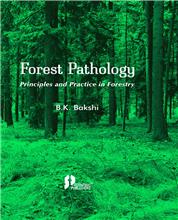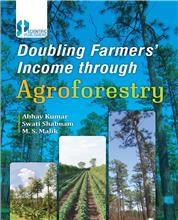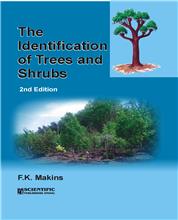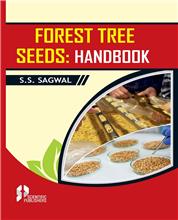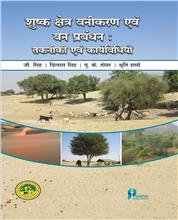Foreword
Preface
1. Background context and observations
1. Background
2. Geographical location
2.1 Physiography of the region
2.2 Climate of Rajasthan
2.3 Rainfall Pattern
2.4 Land use pattern
3. Population dynamics
3.1 Human population
3.2 Livestock population
4. Methods of observation recording
4.1 Stratification and sample size
4.2 Area surveyed and field observation design
4.2.1 Vegetations and growth measurements
4.2.2 Mapping and general information of sacred groves
4.2.3 Recording of disturbances
4.3 Socio-economic survey
5. Characterizations of soil properties
5.1 Bulk Density Measurement
5.2 Soil pH and organic carbon
5.3 Soil nutrients
5.4 Data calculation and Statistical analysis
5.4.1 Diversity variables and forest type assessment
5.4.2 Endemic species population and regeneration analysis
5.4.3 Calculations of soil carbon density and stock
5.5 Statistical Analysis
2. Sacred places, trees and groves: an overview
1. Sacred places
2. Sacred plants
3. Sacred groves
4. Sacred groves in India
5. Types of sacred groves
6. Importance of sacred groves
6.1 Religio-cultural
6.2 Conservation of Biodiversity
6.3 Ethnomedicinal importance
6.4 Source of non-timber produce
6.5 Sources of water supply and recharge of aquifers
6.6 Conservation of soil and water and in nutrient cycling
6.7 Carbon cycling and carbon sequestration
6.8 Sacred grove and landscape heterogeneity
6.9 Sacred groves and animal diversity
7. Threats and opportunities
8. Conclusions
3. Biological diversity and status of sacred groves in Rajasthan
1. Background
2. Documentation of groves (Documentation of groves)
3. Topography and soil erosion in sacred groves
Data on sacred groves of Rajasthan: 1 to 123
4. Biological diversity of sacred groves
1. Background
2. Floral diversity in sacred groves
2.1 Population and species richness
2.1.1 Tree species
2.1.2 Shrub species
2.1.3 Tree saplings
2.2. Diversity Index (H') and Effective Number of Species (ENS)
2.2.1 Tree species
2.2.2 Shrub species
2.2.3 Tree saplings
2.3 Reciprocal of Simpson index (1/D)
3. Species richness and ENS in districts
4. Tree dominance and diversity
4.1 Tree diversity
4.2 Diversity of tree saplings and shrubs
5. Agro-climatic zones and diversity variables
6. Basal area of vegetation
6.1 Spatial variations in basal area
6.2 Effect of tree dominance
6.3 Effects of agroclimatic zones
7. Animal diversity
7.1 Birds
7.2 Mammals
7.3 Reptiles
8. Species of IUCN list
9. Statistical relations
10. Conclusions
5. Soil status and soil carbon stock of sacred groves
1. Background
1.1 Protecting natural habitat
2. Soil characteristics
2.1 Soil physico-chemical properties
2.2 Soil nutrients
2.3 soil organic carbon and density
3. Spatial variations in soil characteristics
4. Effects of dominant trees on soils
5. Soil changes in agro-climatic region
6. Statistical relations
7. Conclusions
6. Livelihoods from and threats to sacred groves
1. Background
2. Benefits of sacred groves
2.1 Conservation and water availability
2.2. A place of grazing
2.3 Fuel wood collection
2.4 Dry wood collection
2.5 Collection of minor produce
2.6 A place of social gathering and rituals
3. Threats to the sacred groves
3.1 Disappearance of traditional belief
3.2 Urbanization and developmental interventions
3.3 Grove fragmentation
3.4 Sanskritisation
3.5 Increased effects of waste disposal
3.6 Over-grazing and fuel wood collection
3.7 Human greed
3.8 Species in afforestation programme
3.9 Invasion by exotic weeds/species
3.10 Policy implication
4. Conclusions and future perspectives
7. People perception and management strategies
1. Background
2. People’s perception
3. Causes of concerns
4. Management strategies
4.1 People participation and awareness programme
4.2 Government policy and planning
4.3 Documentation and delineation
4.4 Management of sacred groves and people mobilization
4.5 Restoration of sacred groves
4.6 Control of over grazing and over exploitation
4.7 Control of invasive species
4.7.1 Control of Lantana
4.7.2 Control of P. juliflora
4.8 Conversion under compensatory afforestation
5. Synthesis and future perspectives
8. Bibliography
9. Acronyms
10. Annexure
Annexure II
Annexure III
Annexure IV
Annexure V


